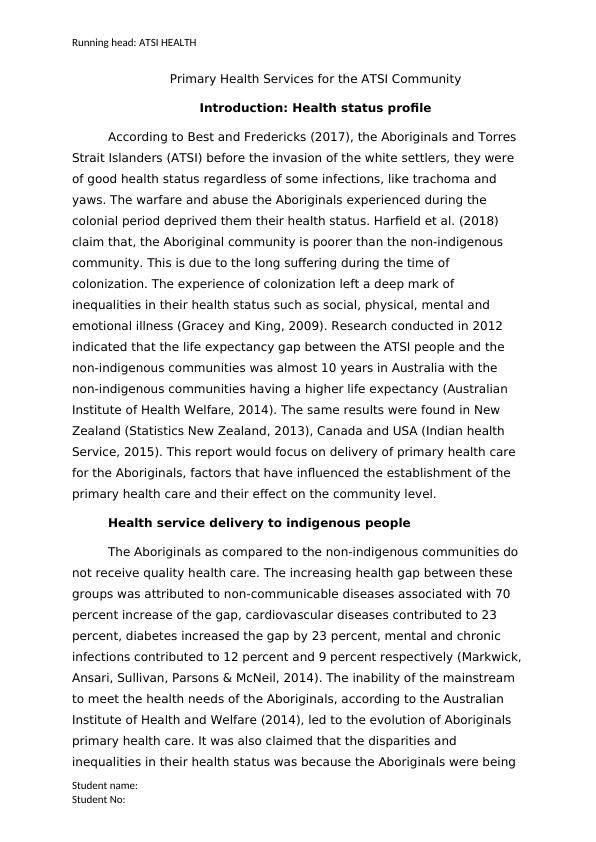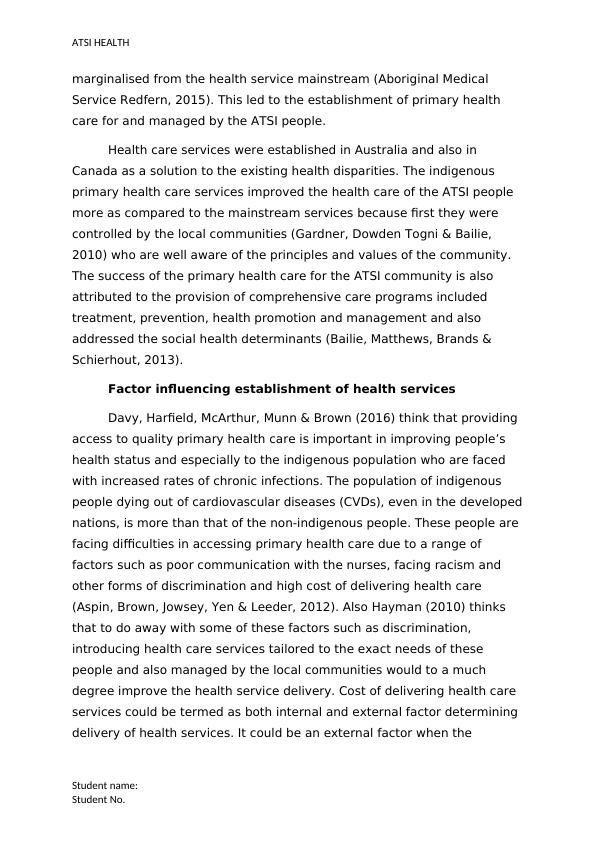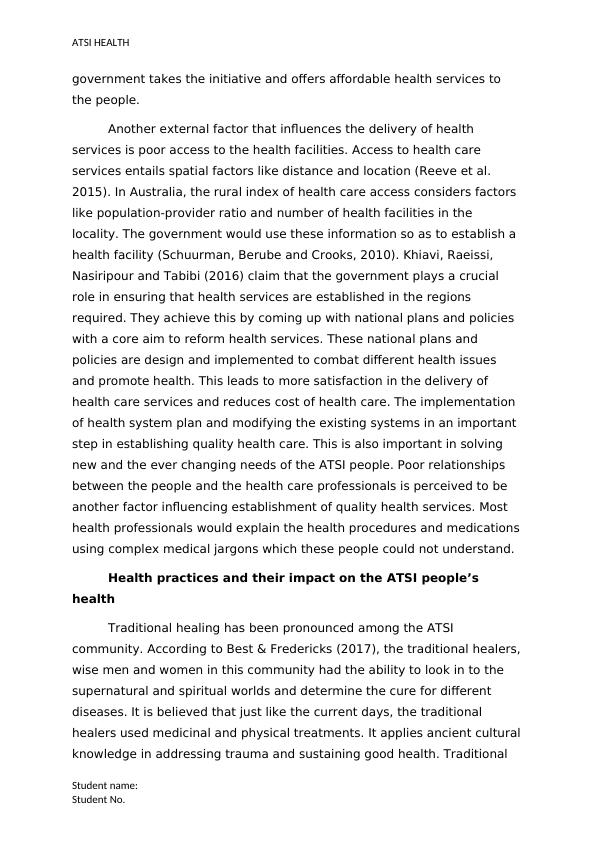ATSI Health: Primary Health Services, Disparities, and Factors Influencing Delivery | Overview and Analysis
Analyzing the profile and importance of an Indigenous Health service in contributing to the health and wellbeing of Indigenous Australians.
Added on 2023-04-25
About This Document
In this document we will discuss about ATSI Health and below are the summary points of this document:-
-
The text discusses the health status profile of Aboriginal and Torres Strait Islander (ATSI) communities.
-
It highlights the disparities in health care delivery between ATSI and non-indigenous communities.
-
The text explores the establishment of primary health care services for ATSI communities and the factors influencing their development.
ATSI Health: Primary Health Services, Disparities, and Factors Influencing Delivery | Overview and Analysis
Analyzing the profile and importance of an Indigenous Health service in contributing to the health and wellbeing of Indigenous Australians.
Added on 2023-04-25
End of preview
Want to access all the pages? Upload your documents or become a member.



